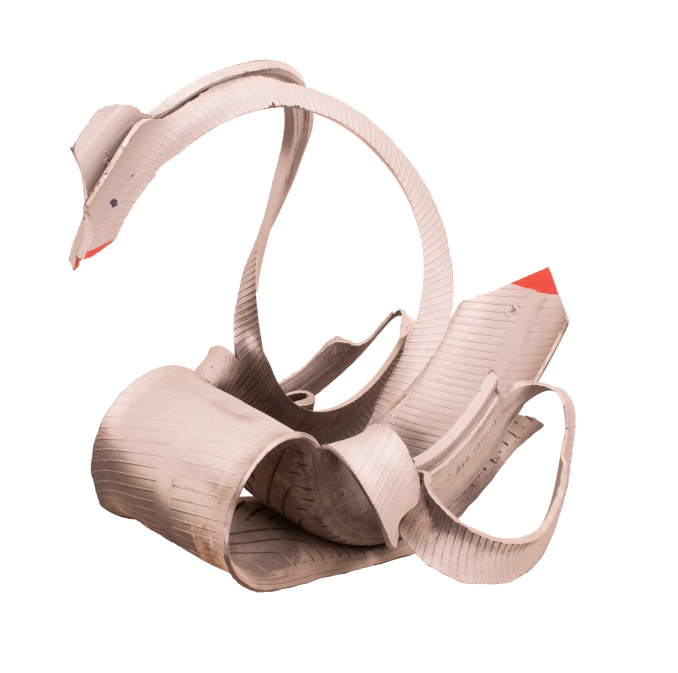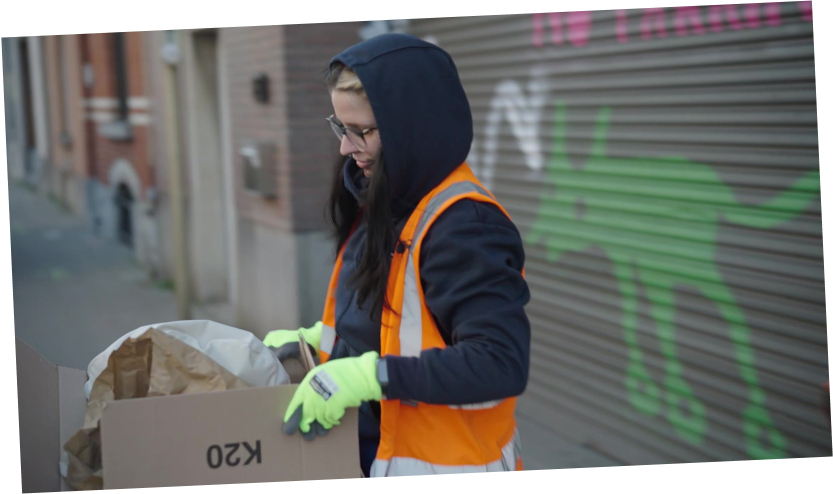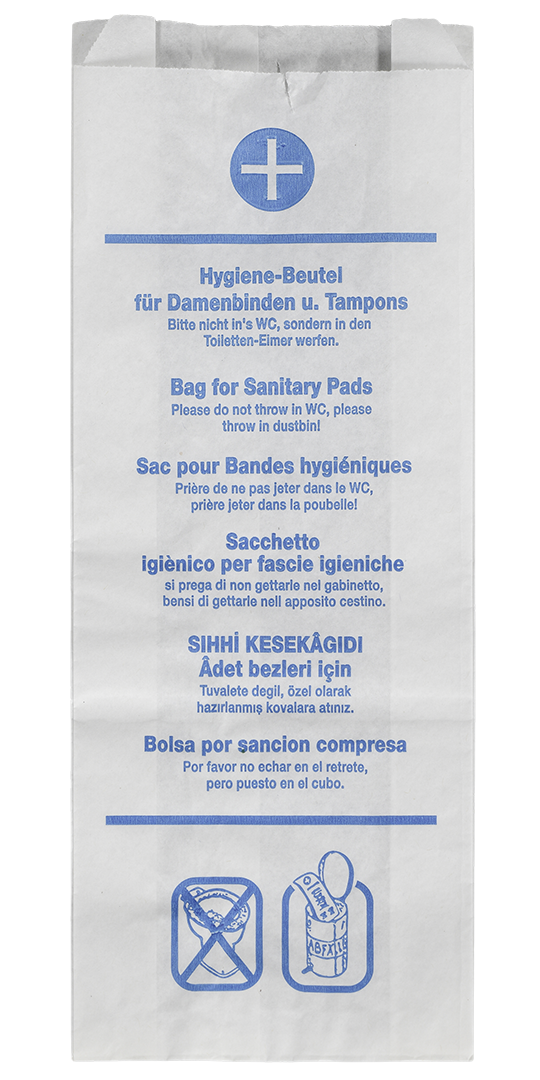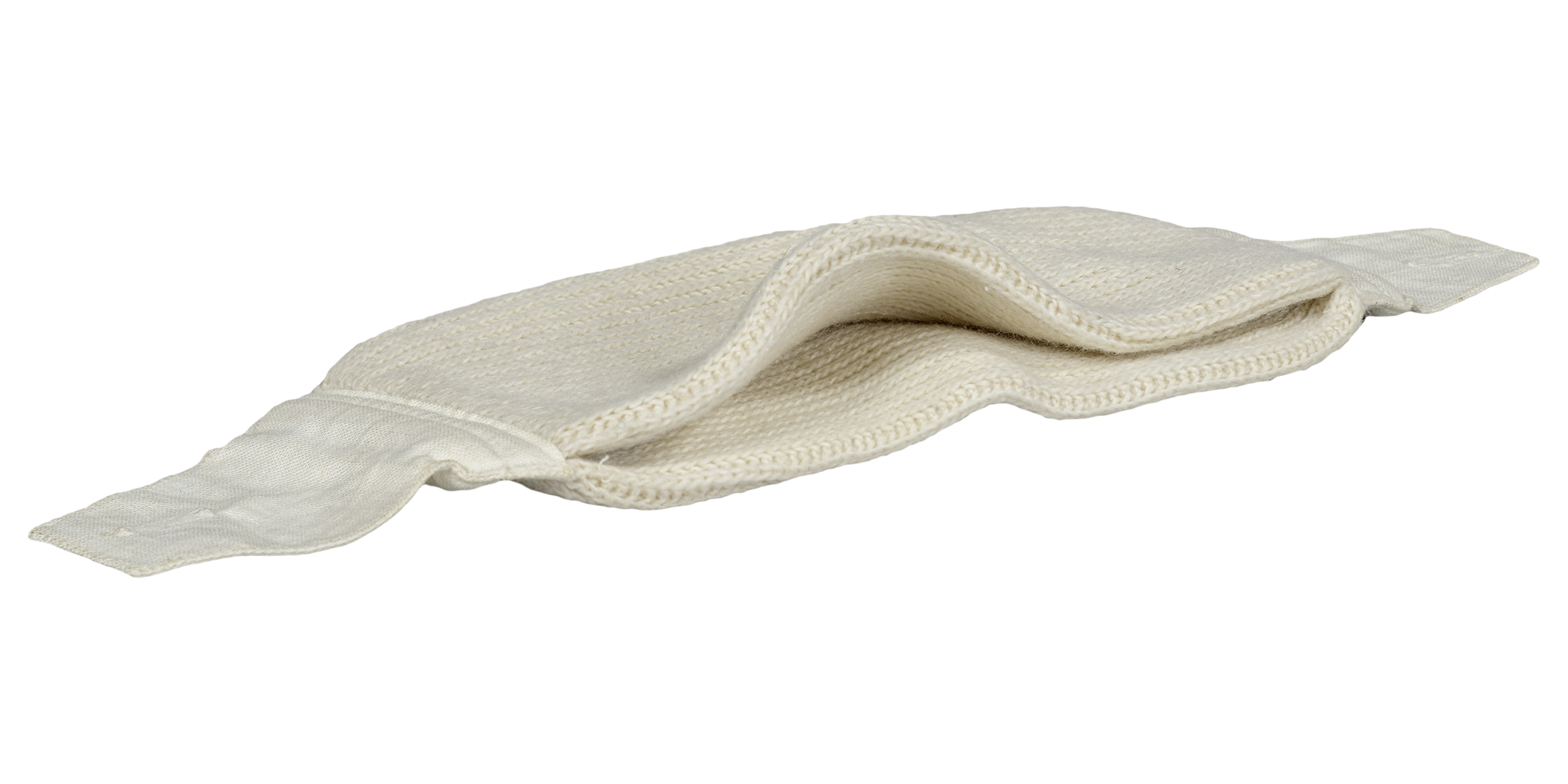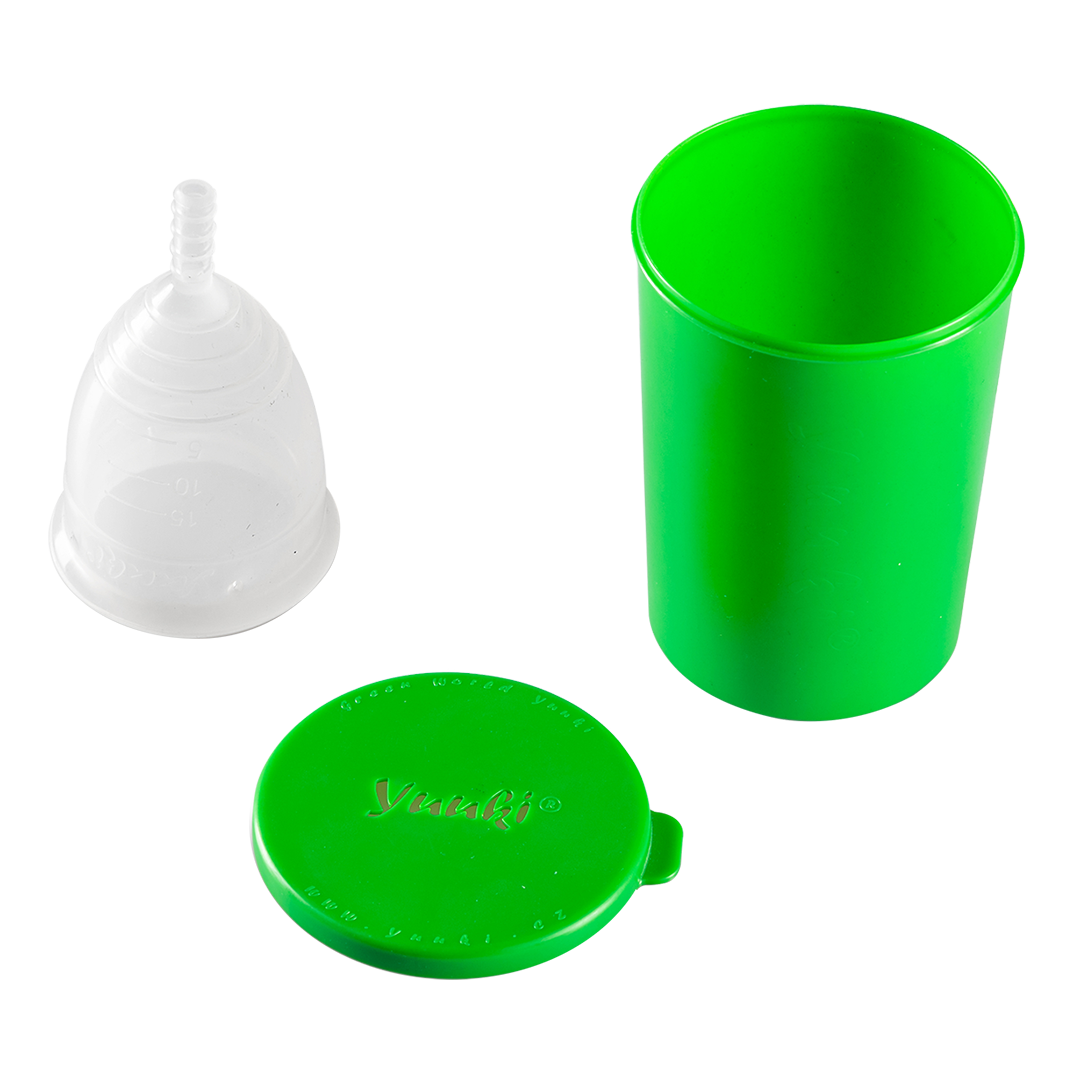Artist/Maker Manufacturer: Westdeutscher Bindegarn-Vertrieb Eselgrimm GmbH & Co. KG
Date Production/Creation
approx. 2019
Entry in the museum collection
2020
Place of origin
Brussels, Belgium, Europe
Current location
Museum of European Cultures, Berlin, Germany
Material
Paper, printed
Dimension
29x11 mm
Inventory Number Not yet catalogued
Keyword Menstruation Rubbish Packaging
Copyright
Status In storage
Image Credit Staatliche Museen zu Berlin, Museum of European Cultures / Christian Krug Public Domain Mark 1.0
A pad within a bag, within a bag, within a bin. But why?
What is this object about, who are the people behind it?
Bags such as this – made of paper or, sometimes, plastic – are often available in female public toilets. One wholesaler’s website explains that sanitary bags are used in female toilets ‘for the safe disposal of sanitary pads’. Used sanitary products are placed in the bags, which are then disposed of in a sanitary bin. It is not clear who they are designed to protect and how: is it the people menstruating, cleaning staff or others involved?
What places is this object related to, how European/transnational is it?
Paper bags like these can be found in female toilets in a number of European countries. Produced by a small number of manufacturers, the bags are often the same, with the text therefore printed in many different European languages.
Why and how did this object arrive in the museum’s collection?
In the run-up to our exhibition on menstruation, one of our curators started paying attention to sanitary bags. When travelling around, she began looking out for them and would ask colleagues from other countries to send her bags from there. She came to realise there was little variety out there: she kept coming across the same model. A colleague brought her this bag back from Brussels.
What is the relation of this object to waste?
Disposable pads, which become waste after just one use, came on the market in Germany at the end of the 19th century and really caught on from the 1920s. From the 1950s onwards, they largely replaced washable knitted and fabric pads. But the growing use of disposable pads gave rise to the issue of where to dispose of sanitary waste without clogging toilet waste pipes. Bins were installed in female toilets from the 1950s to collect this waste. It was after this that paper bags found their way into bathrooms.

